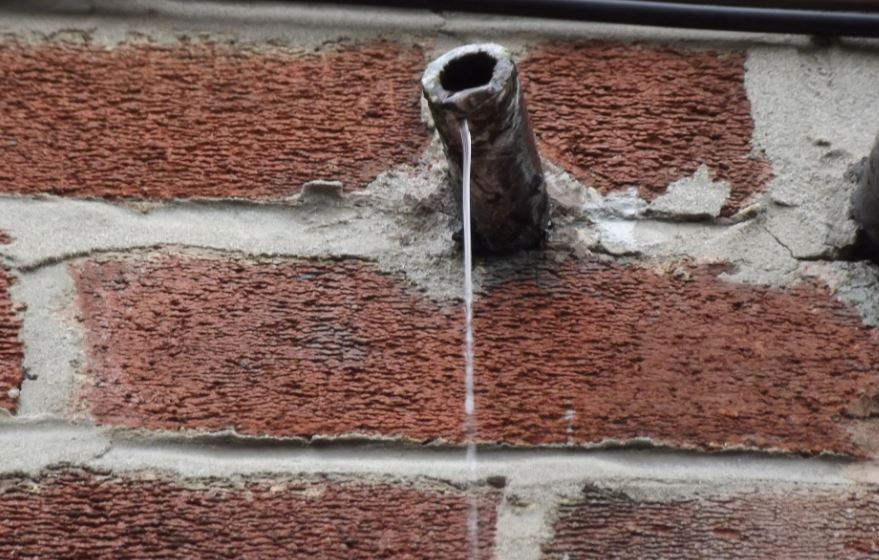
A stable base is the key to the structural integrity of any home or building. As such, it is important to frequently examine it for wear and tear. Typically, signs of a damaged foundation include:
- Large cracks in the outside concrete
- Gaps between the wall seams or around the top of the wall and the ceiling
- Cracked drywall and nails popped out
- Sloping floors or staircases
- Windows that are jammed, difficult to open or which have cracks inside the glass
Foundation repair can be complicated in nature. It may involve installing reinforcing piers under your home or maybe replacing the whole foundation or a wall. For the entire process to be finished, it may take a few days or several weeks depending on the foundation’s condition.
One important step in the process is to investigate the plumbing. A special plumbing test is usually needed after the piers are established and the home’s basement is stabilized.
The plumbing test is necessary to protect you and your home from further damage. It is well known that one cause of structural failure is water and moisture from plumbing leaks.
Is a checking out your plumbing really that important?
It most certainly is.
A competent basement contractor will require one while foundation maintenance is completed.
In a few cases, a plumbing leak is the main cause of foundation issues. This oftentimes takes place in regions with expansive clay soil. Expanding soil tends to grow bigger when in contact with water. This expansion leads to soil pushing on the foundation exterior, causing cracking, bowing and shifting.
Left unaddressed, this can require a total rebuild of the basement. As with any home repair problem, acting speedy is key to saving you from more damage and more money needed for repairs.
Sometimes, the leak happens after a repair to the foundation is done. In most cases, it takes place after a residence is lifted. As the foundation is lifted, the plumbing stays solidly embedded inside the ground.
A slow leak may transform soil into dense mud. Mud, needless to say, cannot hold a foundation. If the leak is from a freshwater pipe, rapid soil erosion can take place.
Plumbing troubles and foundation restoration from time to time go hand-in-hand. Before the work begins, make sure you realize your contractor’s limitations and costs.
How does a hydrostatic plumbing check work?
A hydrostatic plumbing test works by way of putting pressure on your home and sanitary sewage systems.
An inflatable ball is located into the principle sewer line, either via the drain device underneath a first-floor toilet or via an outdoor cleanout. Old houses normally don’t have clean-outs. To solve this, a plumber may need to move inside your home to find a suitable toilet.
If the test reveals a leak, you’ll need a plumbing repair. Left unattended, leaks can cause pricey foundation harm. It’s for this reason that competent structure repair contractors insist on a plumbing check. This prevents the re-occurrence of a future foundation problems.
How does repairing a foundation have an effect on plumbing?
As you could imagine, lifting a foundation can also cause the plumbing to relocate. The work of a local foundation repair contractor, in a few cases, may correct plumbing issues from misaligned pipes.
However, lifting your property’s foundation or crawl space may also lead to plumbing harm. Because of this, having the plumbing system in your home tested is essential.
Can the plumbing breakdown when your foundation is being repaired?
Generally, it depends on a variety of factors. They include:
- How far the plumbing is from the cracking or bowing
- Age and condition of plumbing
- How far the base has dropped
- Soil density around the plumbing
All these factors are associated with the state of the pipes, the extent of foundation damage, and the soil beneath the foundation. All of these elements are beyond the scope of a typical foundation repair company.
Because the contractor is generally not aware of a home’s plumbing design, a leak may occur when a basement structure shifts in the soil.. Sewage leaks are harder to detect, as they’re un-pressurized. Freshwater leaks, on the contrary, are clean to pick out as they’re pressurized.
Common Signs of Plumbing Leaks
Wet spots: This is a standared indicator of a plumbing problem. Have a plumbing check done you may notice moist spots or discolored regions in the flooring.
Foundation cracks: House settlement is commonplace even in more recent homes. However, if issues crop up suddenly, it may signal a foundation trouble.
Mold and mildew: Damp spots frequently cause the steady growth of mold and mildew. Water meter continuously ticking: If no water is being used and the water meter continues rolling along, it’s a signal that water is leaking somewhere.
A spike in the water bill: Keep track of your water bills if you suspect there’s a plumbing leak. If there is an unexpected spike, it means water is leaking.
How much does a plumbing check-up usually cost?
Depending upon how intense the plumbing checks are, the rate of plumbing tests can range from $250-$750.
As one can see, a plumbing check is necessary after basement restoration. It’s a simple way to safeguard your home against future water damage. As a homeowner, the last thing you want is to rectify a foundation issue today and have to address it once more in the future.
